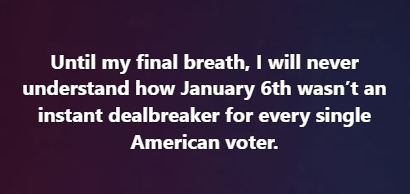Renewable Energy
How Should the Measles/Mumps/Rubella Vaccine Be Administered? Should You Ask a High School Baseball Coach?
 There are so many things going wrong in this country simultaneously that it’s hard to list them all.
There are so many things going wrong in this country simultaneously that it’s hard to list them all.
Here’s something that no one could have seen coming: (see short video here) crackpot politicians giving parents insane medical advice about how to care for their children.
If I told you that our country’s parents were making decisions on vaccinating their children based on information provided by figure skaters or lawn mower salesmen, you wouldn’t believe me.
But the case is actually worse; it’s coming from the White House.
Renewable Energy
Do Americans Approve of Our Country’s Execution of Innocent People?
 In this short video on the bombing of ships leaving Venezuela, President Trump asserts that drug overdoses took like lives of more than 350,000 people last year, a figure that, according to the CDC, is actually 79,383.
In this short video on the bombing of ships leaving Venezuela, President Trump asserts that drug overdoses took like lives of more than 350,000 people last year, a figure that, according to the CDC, is actually 79,383.
In any case, the video fails to mention that executing people who have not been charged with and convicted of a crime is a violation of both domestic and international law.
Do Americans Approve of Our Country’s Execution of Innocent People?
Renewable Energy
Why January 6th Wasn’t the End of Trump/MAGA
 Keep in mind that, in 2020, more than 70 million voters cast their ballots for Trump, who, though he is a pathological liar, is 100% trusted by his supporters. When Trump said the election was rigged, the vast majority of these folks believed him. Even today, more than five years later, there are still millions of people who believe there was rampant voter fraud in the election.
Keep in mind that, in 2020, more than 70 million voters cast their ballots for Trump, who, though he is a pathological liar, is 100% trusted by his supporters. When Trump said the election was rigged, the vast majority of these folks believed him. Even today, more than five years later, there are still millions of people who believe there was rampant voter fraud in the election.
Now, is storming the Capitol and beating up/killing law enforcement personnel an acceptable solution? It wouldn’t be for you or me, or most people, but imagine you’re an uneducated white-supremacist MAGA guy, and your president is telling you to do whatever’s necessary to prevent the election from being certified.
These are people who were so desperate to hang Mike Pence that the vice president had to be escorted out of the Capitol building to a secret and secure location, so he didn’t end up at the end of a rope.
When asked about this, Trump replied, “Maybe he deserved it.” To anyone trying to make sense of this, remember that you’re dealing with a deeply disturbed individual, and many millions of truly pathetic people who believe his is an honest and effective servant of the American people. In congress, we have a couple of hundred of the most terrible butt-kissers imaginable, all clamoring to curry favor with him.
-
Climate Change2 years ago
Spanish-language misinformation on renewable energy spreads online, report shows
-
Climate Change3 months ago
Guest post: Why China is still building new coal – and when it might stop
-
Climate Change Videos2 years ago
The toxic gas flares fuelling Nigeria’s climate change – BBC News
-

 Greenhouse Gases1 year ago
Greenhouse Gases1 year ago嘉宾来稿:满足中国增长的用电需求 光伏加储能“比新建煤电更实惠”
-
Greenhouse Gases3 months ago
Guest post: Why China is still building new coal – and when it might stop
-

 Climate Change1 year ago
Climate Change1 year ago嘉宾来稿:满足中国增长的用电需求 光伏加储能“比新建煤电更实惠”
-

 Carbon Footprint2 years ago
Carbon Footprint2 years agoUS SEC’s Climate Disclosure Rules Spur Renewed Interest in Carbon Credits
-
Renewable Energy4 months ago
US Grid Strain, Possible Allete Sale






